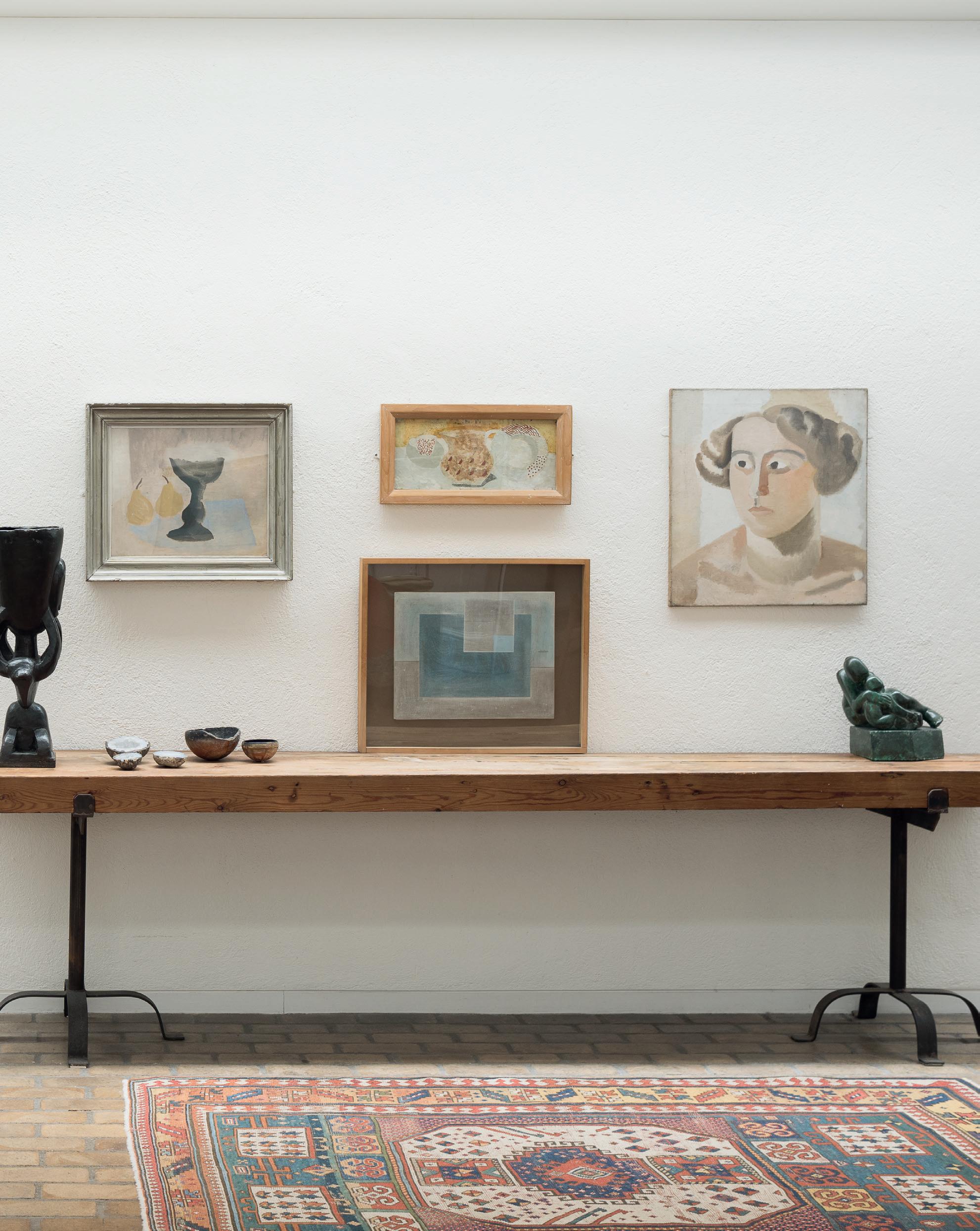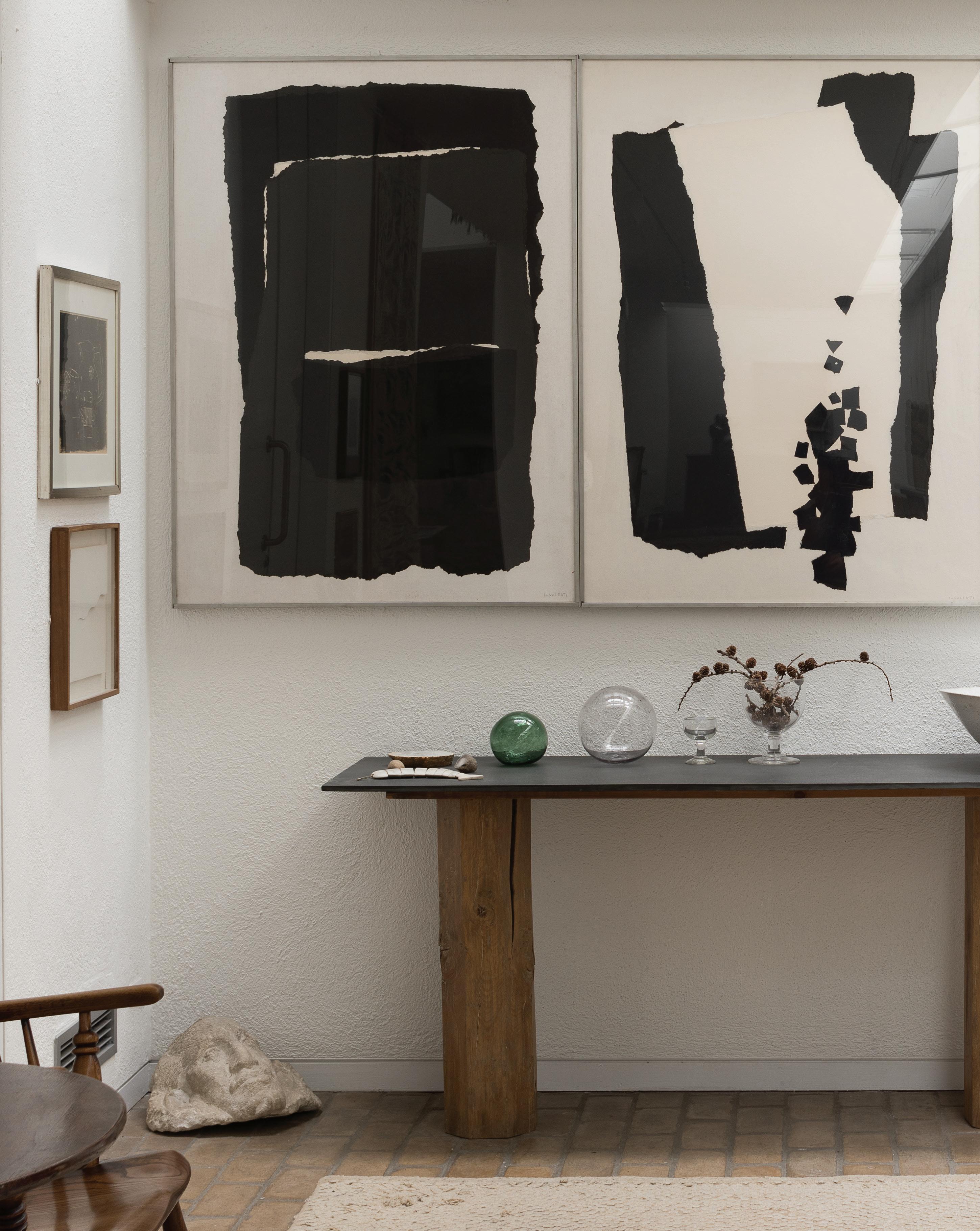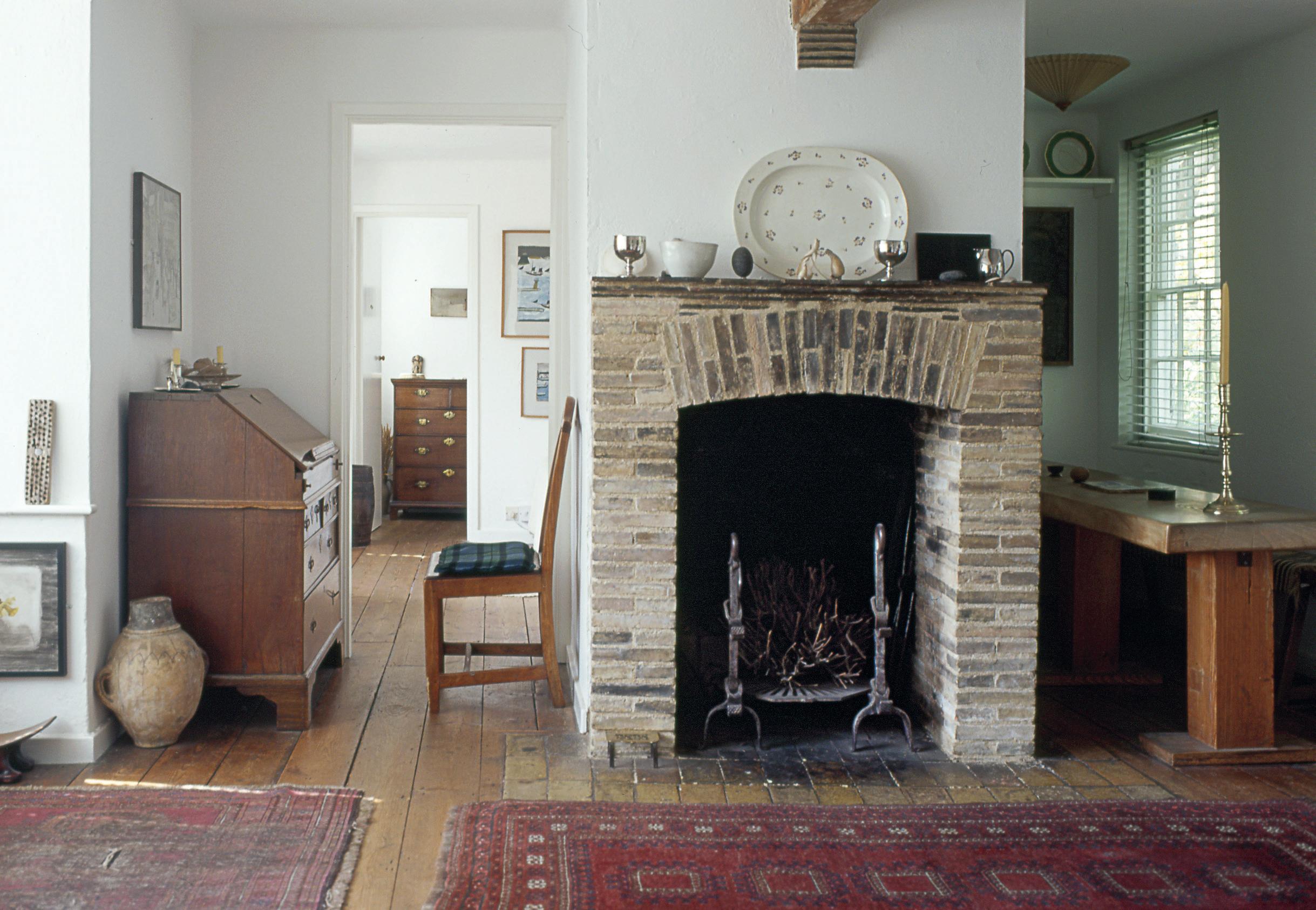
9 minute read
Cottages: Sitting and Dining Room
Alfred Wallis
1 Four-masted schooner and lighthouse , undated Oil on wood
David Jones
2 The Four Queens (reproduction) , 1941 Off-set print on paper
Unknown
3 Pre-Columbian head, undated Stone
David Jones
4 Seascape from a Terrace , 1929 Watercolour on paper
Ben Nicholson
5 jug , 1967 Etching on paper
David Peace
6 Glass goblet ‘Achoellen Bremblens’ , 1971 Engraved glass
John Acland
7 Carving, c. 1960 Slate
Ian Hamilton Finlay
8 KETTLE’S YARD / CAMBRIDGE / ENGLAND IS THE / LOUVRE OF THE PEBBLE, 1995 Inscribed stone
Unknown
9 Chief’s seat, from Atiu, Cook Islands, undated Wood
Christopher Wood
10 Flowers , 1930 Oil on board
11 Paris Snow Scene , 1926 Oil on canvas
12 Ship in Harbour , 1928 Incised wash on board
Elisabeth Vellacott
13 Trees, Orchard in Spring , 1967 Graphite on paper
William Congdon
14 Istanbul no.2 , 1953 Oil on board
Ben Nicholson
15 1927 (apples and pears) , 1927 Oil and graphite on canvas
Alfred Wallis
16 Seascape – ships sailing past the Longships , c. 1928 Oil on canvas
Christopher Wood
17 Le Phare , 1930 Oil on board
Joan Miró
18 Tic Tic , 1927 Oil on canvas
Jim Ede’s sitting room introduces some of the recurring visual themes of Kettle’s Yard. Relationships between art and found objects, light and dark, smooth and textured surfaces are central to this space. Light floods in through the slatted blinds, creating patterns on the floor that gradually fade into the shadow of the recessed dining area. Ede was especially interested in exploiting the variations in angle and intensity of the sunlight to create changing visual effects. When Ede was refurbishing the cottages he added bay windows in this and the next room, to allow more light.
On the round table by the window, the intersecting circles of John Acland’s Carving [7] echo the relationship between the semicircles of the windows and the table by the entrance door.
The subtle use of light is also a significant feature in David Jones’ Seascape from a Terrace [4] , an early watercolour by the poetartist. The view is painted from the house that his parents regularly rented at Portslade, on the coast near Brighton. The artist recalled: “… the bungalows were remarkable in that they were built literally on the sea-margin, so that if the weather were at all rough, the surf and spray broke on their seaward balconies – and I made numerous drawings looking wave-ward.” The series focused on the motif of the sea seen from an interior, a subject which the artist investigated again in Wales and Devon. The bureau standing at the opening to Ede’s bedroom was his first purchase at the age of fourteen. It was where he conducted all of his business during his period of residency at Kettle’s Yard between 1957 and 1973.
Ben Nicholson’s 1927 (apples and pears) [15] hangs at the entrance to the dining area. Like the majority of the artist’s paintings at Kettle’s Yard, it dates from the early part of his career. Ede could afford to buy Nicholson’s paintings only until the 1930s; in the following decades the artist’s success made them too expensive for him. This is why the majority of later works by Nicholson in the collection are either drawings or prints, many of them gifts from the artist. An indication of the care Ede took in the disposition of paintings can be found in the progression from light to dark between Nicholson’s luminous 1927 (apples and pears) , displayed in full light, and William Congdon’s Istanbul no.2 [14] , hanging at the dark end of the dining area.
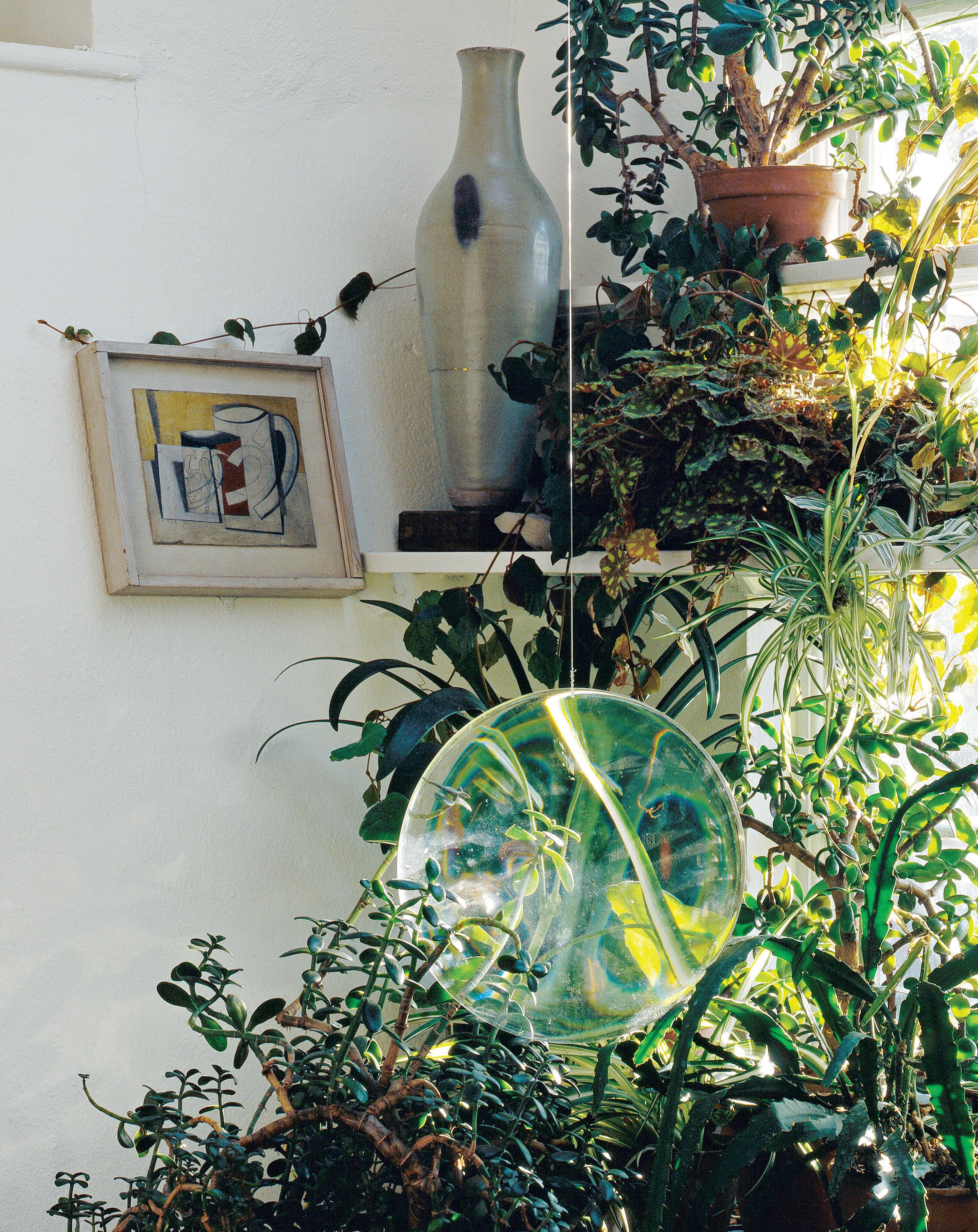
The small conservatory of plants just before the stairs, highlights the importance placed by Jim Ede on the presence of nature amongst his collection. The interspersing of greenery, shells, stones and works of art reminds us that Ede viewed his collection as a living and ever-changing entity. The moving patterns of light and shadows across the surface of Gregorio Vardanega’s plexiglass Disc [24] , suspended from the ceiling, further enhance this.
To the right of the conservatory hangs Elisabeth Vellacott’s Bare Trees and Hills [27] , the first of her works acquired by Ede. Vellacott was born in 1905 and was a founder member of the Cambridge Society of Painters and Sculptors. What made this work particularly appealing to Ede was the fact that the artist “could leave untouched a large area of paper and yet keep it full. Never in the drawing itself does the paper become empty, so subtly does she approach it with her pencil.” On the floor on the opposite side of the room stands Vellacott’s Portrait of Gwen Raverat [5] , another Cambridge artist, best known for her wood engraving illustrations.
By the window stands Jar (The Heron) [23] , a tall vase by William Staite Murray. Ede remembered that:
“it had just been given to me by its maker … when David Jones came to stay and knocked it off the window-sill of his bedroom. It was in several pieces. With much anxiety I told W.S.M., but he was delighted since it gave him the opportunity to mend it in the traditional way with gold.”
The adjacent space, known as the ‘dancer room’, is host to the most dramatic play of sunlight at Kettle’s Yard. The large arched window, installed by Ede himself, casts changing patterns of raking light.
The two sculptures placed near the window are particularly affected by this light. George Kennethson’s abstract Construction (Birds) [16] , carved in alabaster, was purchased by Ede around 1968. The sculptor wrote that his work represented:
“birds alighting, or in flight or at take off … it is really to do with freedom.”
Standing on the round table, Gaudier-Brzeska’s Dancer [15] approaches movement in three dimensions in a different way. Originally modelled in plaster in mid-1913, the figure was a mature response to the sculptural notions of Auguste Rodin.
View of the bridge showing Gregorio Vardanega’s Disc , Ben Nicholson’s 1944 (mugs), and William Staite Murray’s Jar (The Heron)
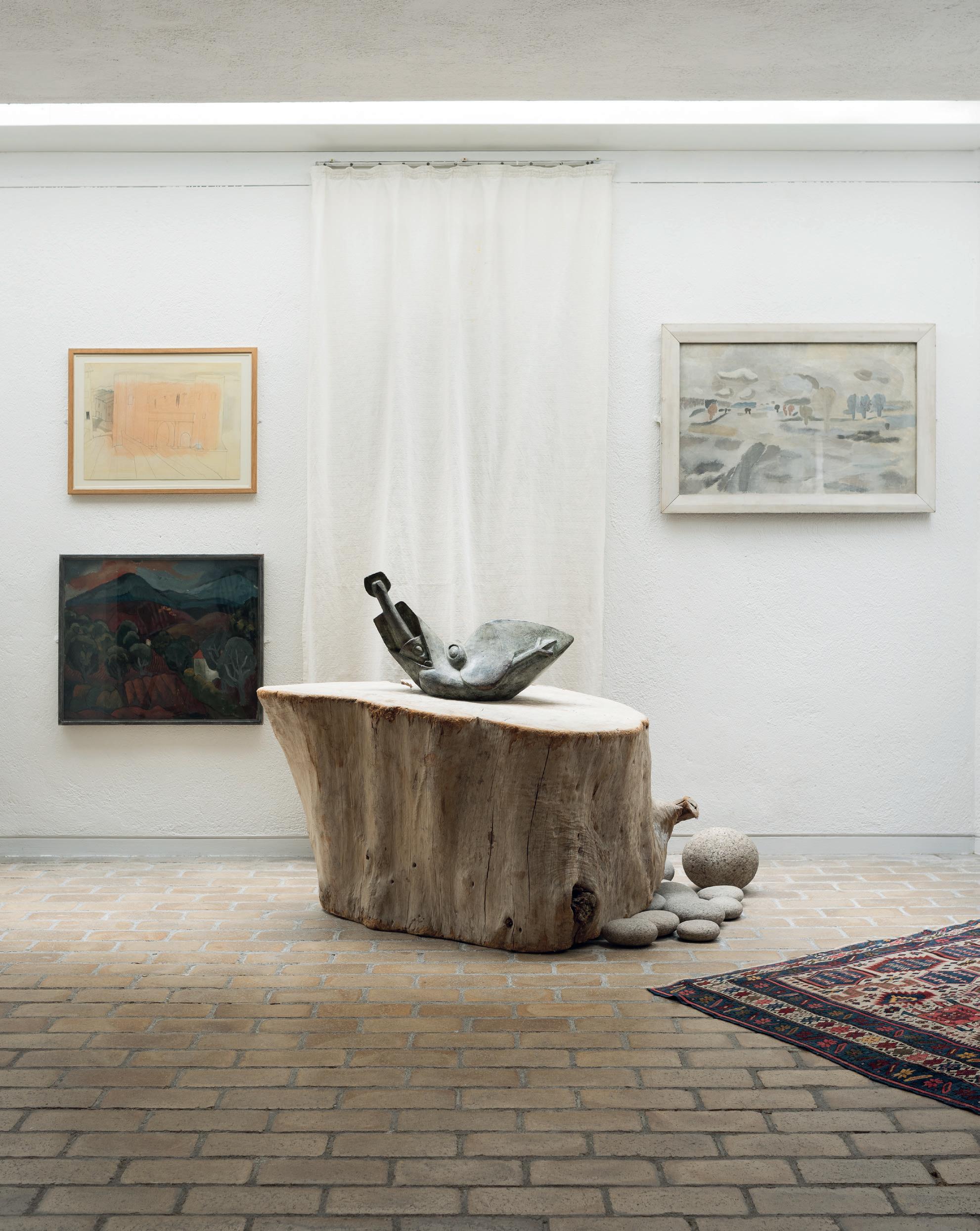
At the foot of the stairs we encounter David Jones’ coloured inscription, Quia per Incarnati [1] , partly taken from the Christmas Preface to the Mass. Translated, the inscription reads:
“For by the mystery of the Word made flesh the light of thy brightness has shone anew into the eyes of our mind. Minerva has sprung from the head of Jove”.
The clarity of the lettering and the use of appealing gold, green and red contrast with the way in which the words run into one another, making the reading difficult. This seems to be Jones’ way of inviting the viewer to slow down and engage with the intellectual and spiritual content of the text.
To the left of the inscription is Gaudier-Brzeska’s Seated Woman [5] . Like Birds Erect [11] and Bird Swallowing a Fish [8] , on its left, this piece was completed in 1914, just before the sculptor’s departure for the trenches.
Although by this time Gaudier-Brzeska was committed to the technique of direct carving, lack of money often forced him to use whatever material was available. In Bird Swallowing a Fish , for instance, he modelled plaster and painted it green to make it resemble bronze. The subject derived from an incident observed by the sculptor in Hyde Park. Made at the climax of Gaudier-Brzeska’s engagement with Vorticism, this work represents an attempt to portray organic forms in a rigidly symmetrical and almost mechanical way. The tension and air of menace are unmistakable: several have commented on the fish’s likeness to a bomb.
Birds Erect bears a closer relationship with contemporary French Cubist sculpture. Its angular, block-like masses make it Gaudier-Brzeska’s most abstract statement. A preparatory drawing again indicates that the subject derives from one of the sculptor’s sketching trips in the parks of London.
Above the side-board hangs Christopher Wood’s Building the Boat, Tréboul [6] . This was one of the artist’s last paintings before his untimely death in August 1930. Completed in Brittany, the work carefully describes the local architecture and the costume worn by the women. Wood’s interest in the work of Paul Gauguin, Vincent Van Gogh and Alfred Wallis is noticeable in the maritime subject, the rough handling of paint and a colour range of non-naturalistic greens and blue-greys.
Three works by Winifred Nicholson are grouped on the wall opposite. Sam Graves [17] is a portrait of the youngest son of the novelist Robert Graves and his wife Nancy, sister of Ben Nicholson.
The extension is frequently used for musical recitals. Jim Ede viewed music as an essential component of Kettle’s Yard. The special combination of natural light, carefully designed space, music and works of art can all be enjoyed during the many concerts that still take place at Kettle’s Yard.
A musical theme is emphasised by the placement of Ben Nicholson’s 1933 (musical instruments) [11] to the left of the grand piano. Rhythm is a central feature of this work, both in the arrangement of the guitars and in the sweeping linear incisions on the paint surface. Nicholson’s restricted palette, of red set against browns and greys, and the complex spatial arrangement of the piece again show a response to the 1920s still lifes of Georges Braque. The work was painted shortly before Nicholson made his first reliefs and entered the realm of pure abstraction.
On the Steinway piano sits one of two constructions by the Russian-born sculptor Naum Gabo, Linear Construction in Space No. 1 [12] or Construction in Space: Suspended , 1962. Appropriately, rhythm is again central to both works, which are alternated on display due to their fragility. Each construction sets up an engaging series of conversations – with itself and its surroundings – between solidity and lightness, mass and void, movement and stillness, transparency and density. Gabo was one of the the first sculptors to work with Perspex: in these pieces he used the newly invented material to create structures around which he stretched thin nylon filaments. His vision that art should contribute to social improvement ties in well with the type of experience that Ede wanted to offer at Kettle’s Yard. The artist, who had repeatedly visited Jim in his London home, thus expressed his view in 1944:
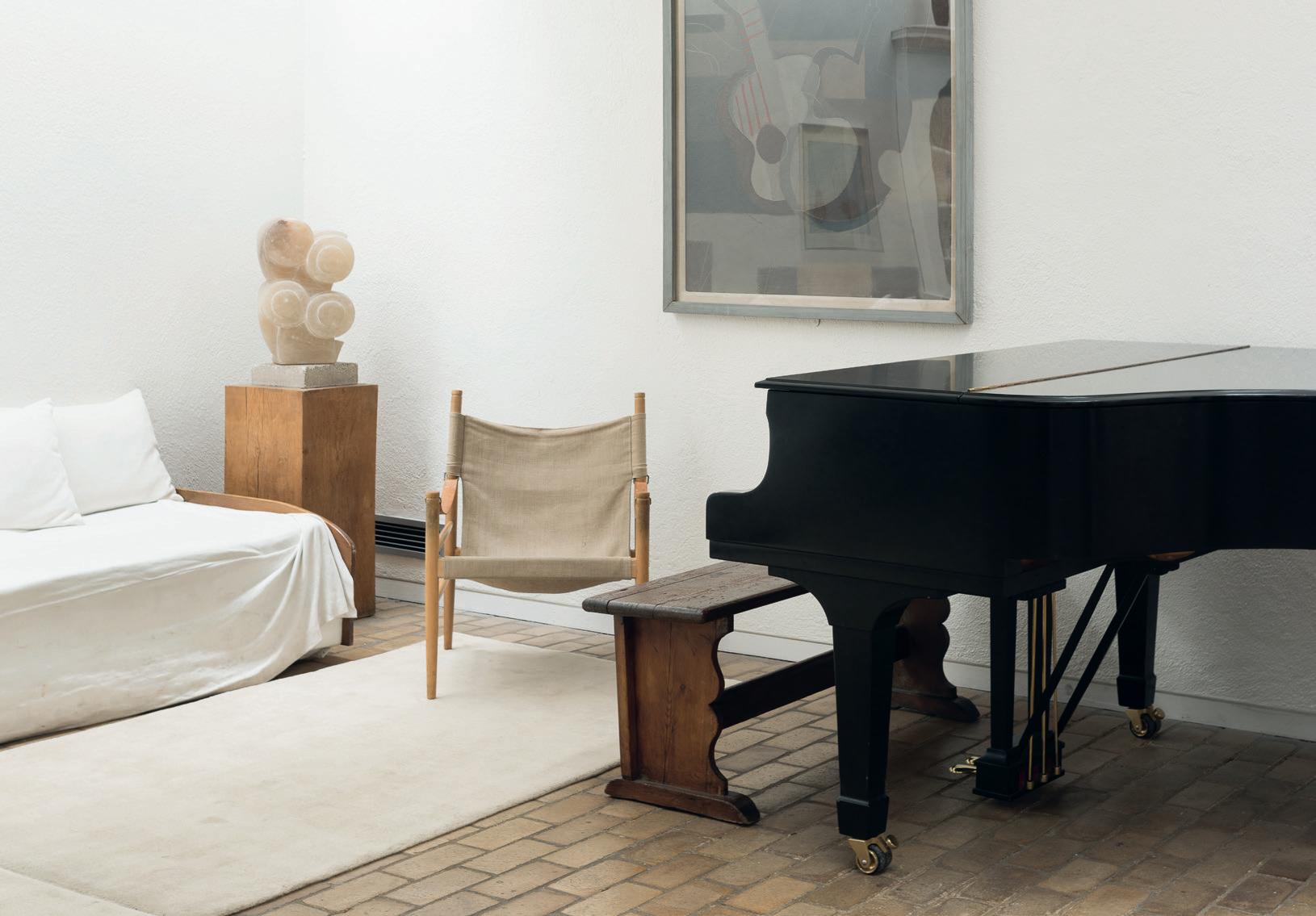
“I think that the image my work invokes is the image of good – not of evil; the image of order – not of chaos; the image of life – not of death. And that is all the content of my constructions amounts to. I should think that this is equally all that the constructive idea is driving at.”
Evidence of Ede’s friendship with Gabo can be found in the affectionate dedication of the monoprint Opus 5 (The Constellations) [14] displayed around the corner. At the far end of this area hang three collages by Italo Valenti: Nr. 284; Etana [25] , Nr. 287; Giardino a mezzogiorno; Jardin a midi [26] , and Nr. 286 ; Pietra ; Pierre [27], all acquired from the Documenta III exhibition in 1964. Placed under a skylight and behind the slate table, the works assume an almost devotional character, like a triptych above an altar. Ben Nicholson had introduced Ede to Valenti’s art, and soon a firm friendship between Jim and the Italian artist developed. This episode is again testament to Nicholson’s enduring influence on Ede’s taste. Ede remembered the impact that the works had on him:
“My introduction to these collage works was a tremendous event … Black really became black, and white had infinite variety. The skill and sensibility with which these pieces of paper were torn, left me amazed.”
On the slate table under the collages, a carefully selected group of objects – including John Clegg’s Fiddle Fish [24] and Lucie Rie’s Conical Bowl [28] , which was often referred to at Kettle’s Yard as The Wave – enhances the altar-like appearance and establishes an arresting dialogue with the Valentis. Moreover, the juxtaposition of Lucie Rie’s bowl with the Cypriot jug on the floor, dating from c.700 B.C., offers an interesting interplay of light and dark, ancient and modern.
A more worldly presence is suggested by Christopher Wood’s Self Portrait [32] , although the curious disproportion of the head and hands gives the painting an almost hieratical appearance. The sense of mystery and transcendence is enhanced by the depiction of the artist’s eyes exactly on the line of the horizon, and in the same colour as the sky. Wood portrayed himself with a paintbrush in hand, seated next to his palette, hemmed in by the Paris cityscape behind him. The artist meets our gaze confidently and self-consciously shows himself as a painter at the height of his powers, living in the capital of the Western avant-garde. As is often the case with large self portraits, this was possibly intended as a major statement. Wood was at the time in the process of establishing a personal style and hoped to make his London reputation through his contribution to the Beaux Arts Gallery show in which the painting was included.
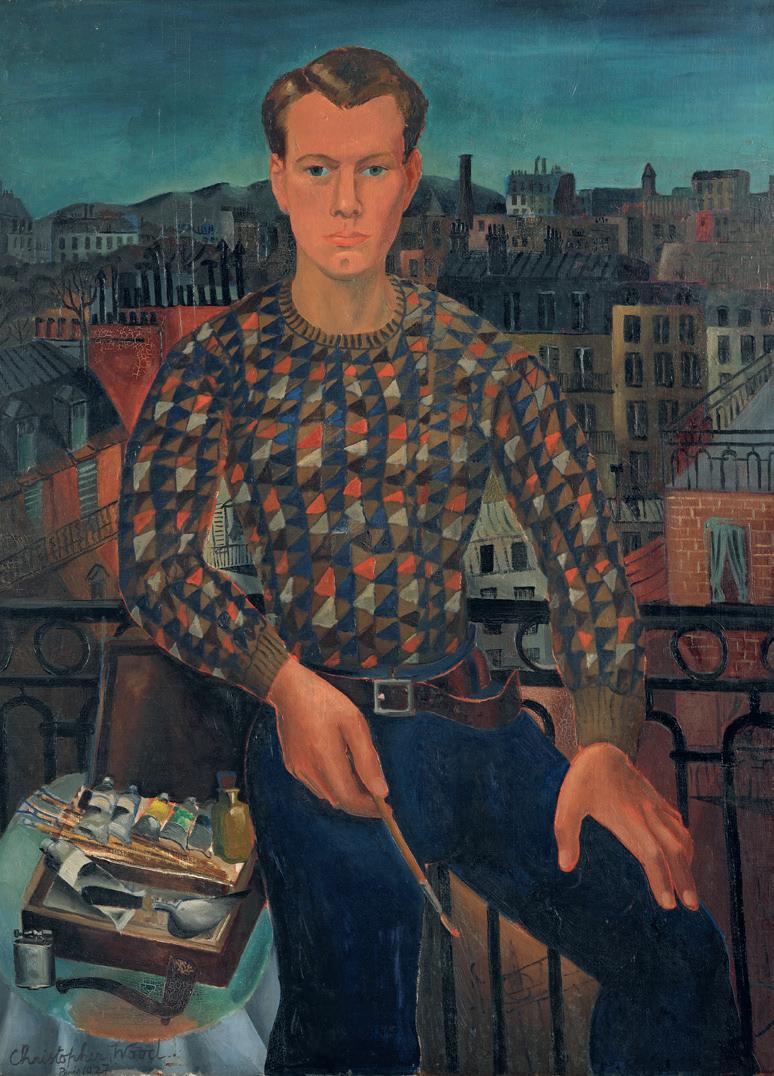
Two Buddhas – one amongst the plates in the dresser by the long couch, the other resting on three wooden columns opposite the piano – again show Ede’s interest in Eastern cultures. The larger Buddha [37] is Khmer, or Cambodian, and dates from the thirteenth or fourteenth century.
The work of Gaudier-Brzeska is as important to the extension as it is elsewhere in the house. Here Two Men with a Bowl [16] gives clear evidence of Gaudier-Brzeska’s interest in African art, whereas the enlarged forms of the nose and ears of the Horace Brodzky Mask [23] – on the floor under the Valentis – show his more playful, satirical side.
The display, above the long wooden table, of a group of Ben Nicholson’s paintings dating from different periods of his career represents a fascinating attempt to summarise his artistic development between the 1920s and 1950s. One work in particular, 1962 (Argos) [42] , with its geometrical construction, engages in a stimulating dialogue with the architecture of the extension.
